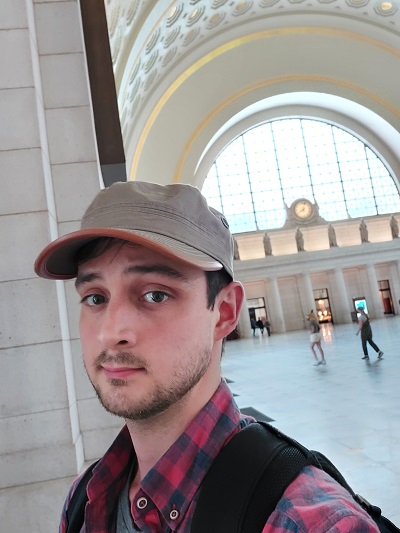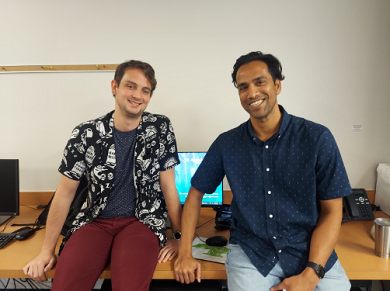David Hardy
David Hardy is a senior chemistry major. On campus David is the Vice President of the Chemistry Club, and will serve as a teaching assistant for General Chemistry. David conducts research with Dr. Wagle on campus examining biomolecular-based solvents and their interactions with nucleic acids using computational methods to test their ability as a candidates for preserving RNA-based vaccines. David is the recipient of the National Science Foundation Research Experience for Undergraduates at various institutions.

How did your mentor(s) encourage and foster your research and academic trajectory?
Dr. Wagle is someone I can always go to for guidance, whether it is advice on the task at hand while we pursue our research, advice on graduate schools and career paths, or just general life advice. He is honest and pragmatic, and the biggest lesson I've taken to heart from him is that the best thing you can do is try; take every opportunity you can, and your effort will eventually be rewarded.
What does the OCF mean to you?
To me, the OCF is about supporting students and helping them navigate the application process, as well as teaching them how to process their past experiences and future hopes and craft genuine, impactful statements of purpose.

What is the National Science Foundation Research Experience for Undergraduates?
The National Science Foundation Research Experience for Undergraduates (NSF REU) provides opportunities for undergraduate students to participate in research through REU sites. At REU sites small groups of students collaborate with faculty and other researchers at a host institution. David is participating in the NSF REU at George Washington University. Through this research experience, David is examining a structure called RING in the enzyme MID1. This structure, RING, has E3 ligase activity to determine if other, similar MID1 structures can exhibit the same E3 ligase functionality by altering its amino acid sequence.

